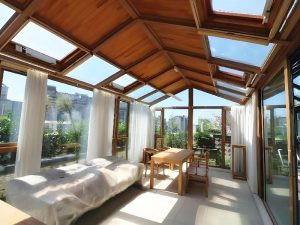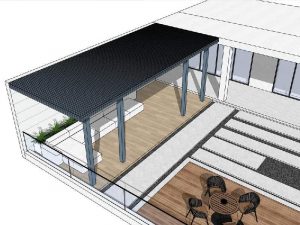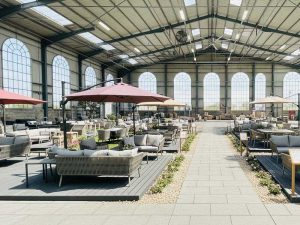Barbecues are always a hit at family gatherings, yet the question of whether it is okay to grill under a gazebo or pergola often causes uncertainty. This concern extends beyond fire safety and proper ventilation – it also involves the durability of the structure’s materials.
As a professional outdoor furniture manufacturer with two decades of experience, LIDA OUTDOOR understands these worries. In this article, we will address key considerations around materials, fire prevention, and ventilation so you can enjoy outdoor grilling in comfort and safety.
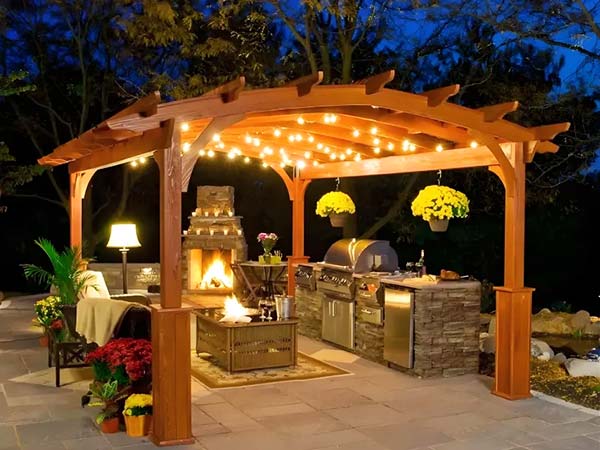
BBQ Under a Gazebo or Pergola: Common Risks and Solutions
When setting up a grill beneath an outdoor shade or windbreak structure, there are several potential hazards to keep in mind. Anyone who wants to savor delicious barbecue under a gazebo or pergola should first be aware of these risks and take preventative measures.
1. Fire Risk
The primary safety concern with grilling under a gazebo or pergola is the risk of fire, which largely depends on the structure’s materials. Metal frames, especially aluminum or galvanized steel, offer the best protection because they are highly heat-resistant and non-combustible – ideal for covering a barbecue area.
Wooden gazebos or pergolas, while naturally appealing, can ignite more easily if the wood is not specially treated for fire resistance. Plastic structures also warrant caution; even though they may not catch fire quickly, they can melt or release harmful gases when exposed to high temperatures. In addition, sparks and drips of hot oil from the grill may land on nearby wooden or plastic furniture, or onto soft cushions, increasing the chance of a sudden flare-up. Although such incidents can be rare, they should never be overlooked.
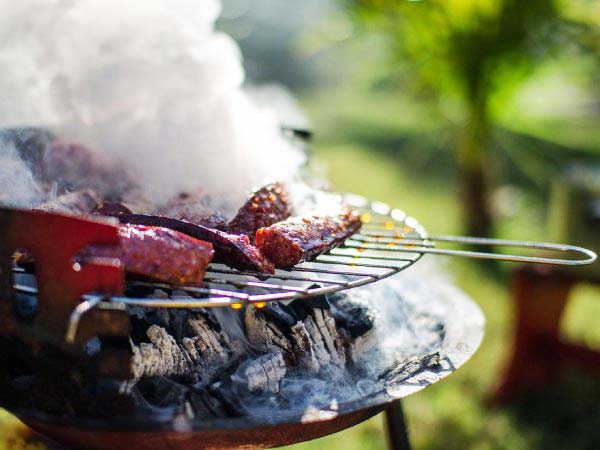
Maintaining a safe distance between the grill and the gazebo or pergola is essential. If possible, place a fireproof mat or heatshield underneath the grill to protect the ground or nearby items from rising temperatures. Keeping combustible furniture—especially wooden chairs and tables—away from the heat source further helps minimize risk. With these precautions in place, you can safely enjoy barbecues under a gazebo or pergola while also reducing the likelihood of fire hazards.
2. Smoke Buildup
Beyond open flames, smoke accumulation is another serious issue. Because gazebos and pergolas typically offer partial enclosure or overhead coverage, smoke can stagnate under the roof. This not only makes the air hazy but can also carry carbon monoxide, particulate matter, and other pollutants that pose a threat to respiratory health.
Ensuring good air circulation is crucial. Barbecuing in an open space or choosing a structure with effective ventilation—like a dual-tiered roof or a design that accommodates an exhaust fan—will help disperse smoke more efficiently. Pergolas, with their open framework, generally allow smoke and heat to escape more quickly than gazebos with solid roofs.
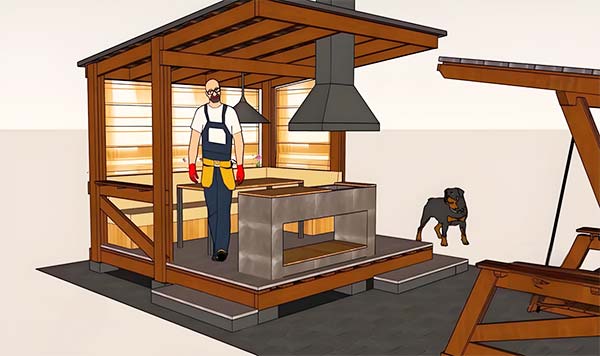
Smoke also contains grease and soot that may settle on the gazebo or pergola over time. Enthusiastic outdoor grillers should be aware that wooden structures can become stained or discolored from these residues, and plastics may warp or degrade under prolonged exposure to heat and grime. To keep surfaces clean and extend the life of the structure, it is wise to wipe away accumulated grease regularly, install a small shield or barrier around the grill to block direct smoke contact and use materials that resist stains whenever possible. By taking these steps, you can enjoy a more comfortable grilling experience and safeguard your gazebo or pergola for the long haul.
3. Heat Radiation
One further factor that is often overlooked is heat radiation. The steady high temperatures emitted by a grill can gradually heat nearby support posts or other structural elements. Metal frames, although heat-resistant, may become dangerously hot to the touch and pose a burn risk. Wood and plastic, meanwhile, can warp, crack, or become brittle after repeated exposure to intense heat. Prolonging this situation without any preventive measures can reduce the lifespan of both gazebos and pergolas, and compromise the safety of your barbecues.
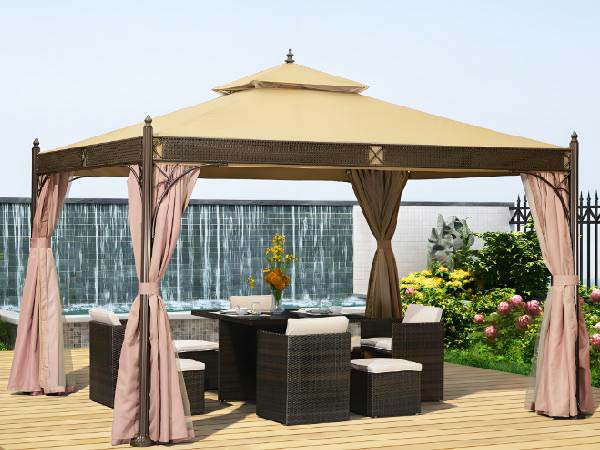
Keeping enough space between the grill and the structure’s support posts is critical. In tighter setups, adding a heatshield or protective pad between the grill and the posts can make a significant difference in reducing radiant heat. It is also important to check wooden or plastic posts periodically for signs of heat-related damage, so you can address or replace components before they fail. By following these basic precautions, you will protect the integrity of your gazebo or pergola and create a safer cooking environment.
Making Grilling Under a Gazebo or Pergola More Feasible
Understanding these potential issues often leads to a key question: is it possible to grill under a gazebo or pergola safely? The answer is yes, as long as proper ventilation, suitable materials, and safe fire management practices are all taken into account.
1. Optimizing Ventilation

Ventilation is vital for both comfort and safety. Gazebos with dual-tiered roofs tend to release smoke and hot air more effectively than single-tier designs, and pergolas typically have an open layout that naturally disperses smoke. If your grill area is under a gazebo, you might consider adding a roof vent, exhaust fan, or positioning the structure to take advantage of prevailing breezes. These strategies allow smoke and heat to dissipate instead of building up beneath the cover.
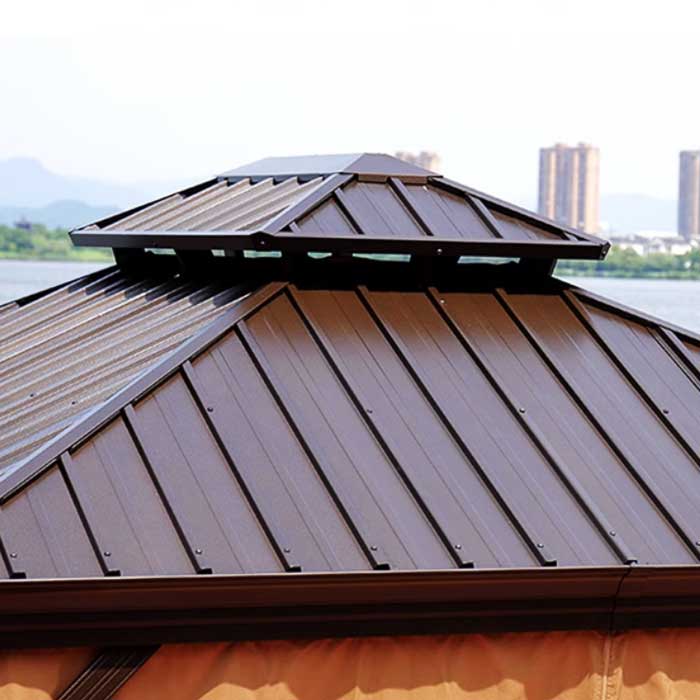
2. Choosing Safer Materials
As mentioned earlier, aluminum or galvanized steel frames are among the safest choices for barbecue areas, due to their high tolerance for heat and lower risk of catching fire. If you prefer the look of wood, select lumber that has undergone certified fire-retardant treatment. While plastic performs well in moisture resistance, it is generally not recommended near high heat because it may deform or release hazardous fumes when overheated.
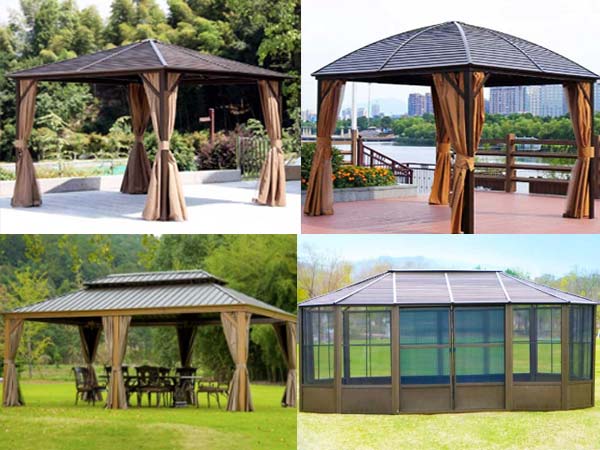

To further enhance safety, it is wise to maintain adequate distance between your grill and the surrounding structure, and to use protective materials like fireproof mats or heatshields. These additions help safeguard the ground and frame from sparks or intense heat. For the grill itself, gas or electric models produce less smoke and are easier to regulate, making them a suitable option in partially enclosed settings.
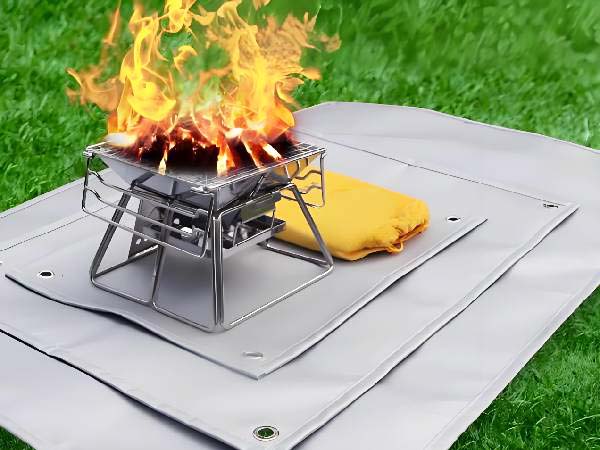
3. Fire Source Management and Essential Precautions
Even if you consider yourself a seasoned grilling enthusiast, it is essential to have basic firefighting equipment such as a fire extinguisher or fire blanket on hand in case of an emergency. No matter how robust the equipment, accidents can still happen, so preparing for unexpected flare-ups is a must. For electric grills, inspecting the wiring before each use is good practice—especially if the unit is stored outdoors, where animals could damage cords.
Photo: Watch out for small animals that might nest inside your electric grill
4. Considering a Grill Gazebo
If lingering smoke or maintenance issues discourage you from grilling under a standard gazebo or pergola, a dedicated barbecue gazebo can be an excellent alternative. Designed specifically for grilling, these structures confine smoke and heat to a separate space while preserving your main gazebo or pergola for dining or relaxation. Prices for barbecue gazebos can range anywhere from $99 to over $1,000, depending on size and features.
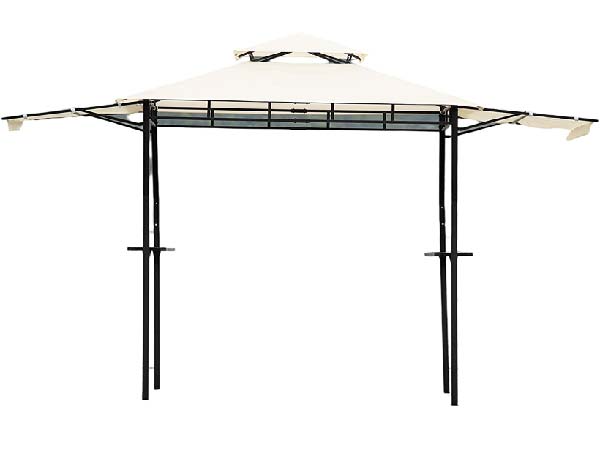
By setting up a specialized grilling area, you ensure that your primary outdoor structures remain cleaner and in better shape. You also gain a more efficient cooking station—perfect for serious grill enthusiasts who want to manage heat, smoke, and safety with fewer compromises.
Conclusion
There is no denying that the smoky aroma of a grill adds to the fun of any gathering, yet it also brings fire, smoke, and heat-related risks. If you want to barbecue under a gazebo or pergola, be sure to address material safety, heat shielding, and ventilation. Should you wish to further enhance your experience or minimize upkeep concerns, a dedicated barbecue gazebo is another effective solution.
With over twenty years of expertise in manufacturing and customizing outdoor furniture, LIDA OUTDOOR can supply high-quality shade structures in bulk. Whether you need a specialized barbecue gazebo, an aluminum-frame gazebo, or any other outdoor furnishings, feel free to contact us. We are here to help you create a safer and more delightful outdoor living space.

